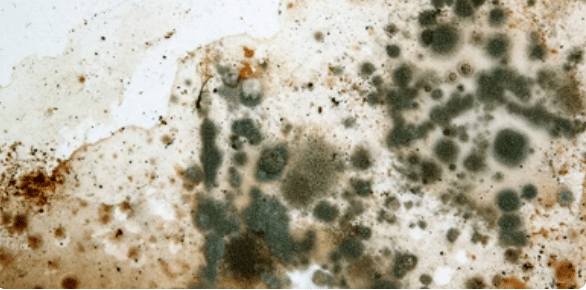What Is Mould?
Mould, is a type of fungus that grows in multicellular filaments called hyphae. Mold can grow on a variety of surfaces such as food, walls, and floors, wardrobes, ceiling spaces, and under floors – especially in areas with high humidity or moisture. It reproduces through the production of spores, which can be spread through the air and can cause health problems for people who are allergic or hypersensitive to these spores. In addition to being unsightly, mold can also cause structural damage to buildings if left unaddressed. Mould can be prevented by controlling moisture levels and humidity, fixing leaks, and using proper ventilation.

Understanding Mould?

Moulds are a type of fungus that grow in damp, dark places. They can be found both indoors and outdoors and are often seen in areas with high humidity or moisture.
Why And Where Does It Grow?
Mould can grow in areas that are damp, warm, and humid. It can appear on walls, ceilings, carpets, furniture, and even food. Some common reasons for mould growth include high levels of humidity, leaking pipes and roofs, poor ventilation, and floods. Mould spores can spread quickly and grow into colonies if left unchecked. It is important to address any moisture issues as soon as possible to prevent mould from growing. Mould can not only damage buildings and furnishings but can also cause health problems for people who are sensitive to it. If you suspect mould growth in your home or workplace, it is recommended that you seek professional assistance to remove it safely and effectively.

Why DIY Mould Removal Doesn't Work
While DIY mould removal techniques may be effective in some cases, they are not always the best solution for mould removal. There are a few reasons why DIY mould removal may not work:
It is best to consult with a professional mold remediation companyvfor effective and safe removal of mold from your home or property.
How Mould Effects Us
Exposure to mould can cause a variety of health effects in humans, including:
1. Allergic reactions: Some people are allergic to mould and can experience symptoms such as sneezing, runny nose, red eyes, and skin rashes.
Is Mould Dangersous?
Mould can be dangerous, especially for people with allergies or respiratory problems. Exposure to mould can cause symptoms such as coughing, sneezing, wheezing, and shortness of breath. In some cases, mould can even cause more severe health problems, such as infections and allergic reactions.
If you suspect that you have a mould problem in your home, it’s important to address it as soon as possible to minimize your risk of health problems.

